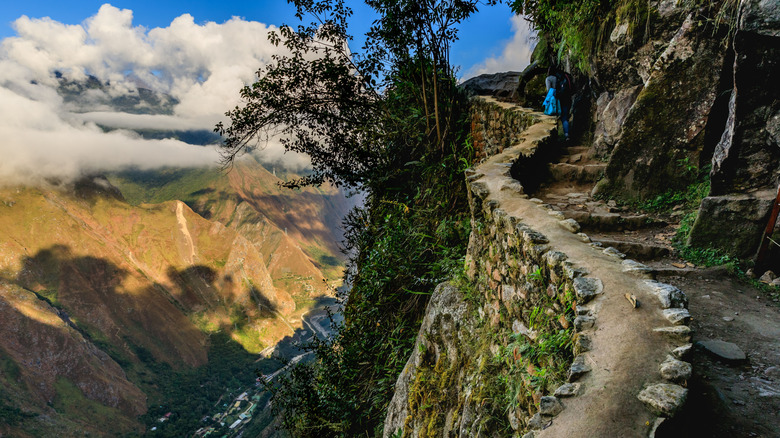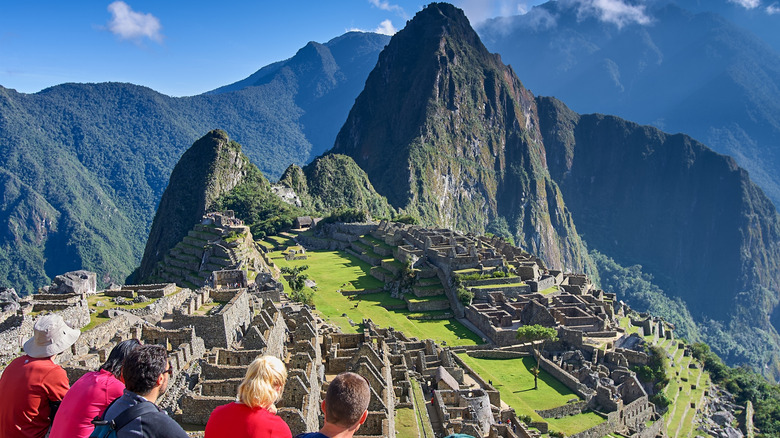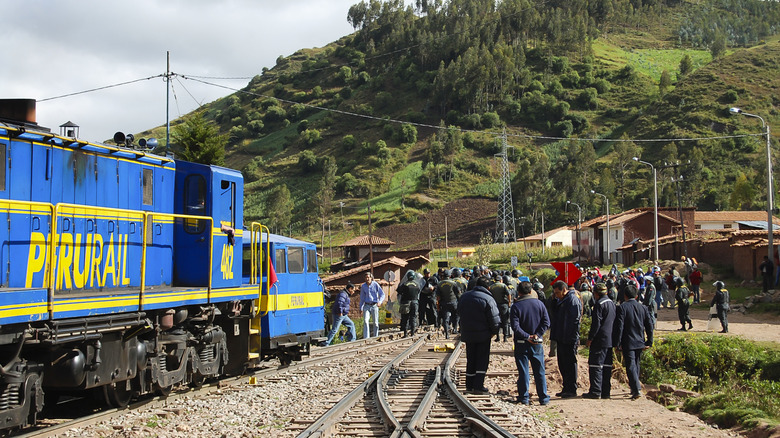This Iconic South American Tourist Destination Could Lose Its 'Wonder Of The World' Title
Over the past month, the internet has been buzzing with a rumor that a popular vacation destination and bucket-list attraction for many may lose its "Wonder of the World" title. Its name roughly translating to "Old Mountain," Machu Picchu is instantly recognizable — every travel influencer seems to have posed among its misty peaks and ancient walls, a traditional Andean poncho draped over their shoulders as they gaze at the extraordinary backdrop. But what's actually going on, and how serious is this issue?
There's more to the rumor than you might have seen while scrolling TikTok. You've probably heard the phrase "Seven Wonders of the World" thrown around on your travels, but the original list dates back to a compilation by Greek writer Antipater of Sidon in the second century BCE. That list referred specifically to the Seven Wonders of the Ancient World — architectural feats like the Pharos (lighthouse) of Alexandria in Egypt and the Colossus of Rhodes in Greece. All of these structures have since been destroyed by earthquakes or human attacks, except for the Great Pyramid, which has stood strong along the Nile River in Giza for over 4,000 years.
In the centuries since, countless other "seven wonders" lists have emerged, including a "Seven Natural Wonders of the World" list created by CNN in 1997, featuring sites like Mount Everest and the Grand Canyon. Machu Picchu gained modern fame as a must-visit destination when it won a public vote to be included in the "New 7 Wonders of the World" list, which also features the Great Wall of China and the Colosseum. In September, however, the New7Wonders organization released a statement suggesting that Machu Picchu was in danger of losing its place on the list due to recent protests in the area and environmental problems tied to overtourism.
How reputable is the New7Wonders organization?
The New7Wonders organization has long been controversial. Its founder, Bernard Weber, a Canadian-Swiss marketing professional, came up with the idea in the 1990s — just as the internet was taking off — to use online voting to select a new list of wonders and, ideally, motivate countries to protect them.
Countries paid a $199 fee to enter a site in the competition. From there, the list was narrowed down to 21 contenders, and the final seven were chosen by public vote. But several nations, including the Maldives and Indonesia, later accused New7Wonders of requesting more in additional fees. Indonesia reported that New7Wonders had requested tens of millions of dollars for licensing fees and to host an official closing ceremony if the Komodo Islands were to win the competition. The organization denied those allegations, with spokesperson Eamonn Fitzgerald stating that any fees were for "running the campaign and maintaining a voting platform for a global competition" (via IOL).
UNESCO warned, "the list of the seven new wonders will be the result of a 'private initiative' that cannot contribute in any significant or lasting way to the preservation of the elected sites" (Radio Free Europe).
The real issues surrounding Machu Picchu
Whether or not the New7Wonders statement was meant to push Peru toward stronger conservation efforts — or for less altruistic reasons — there's no question that Machu Picchu has faced growing political and environmental challenges. In September 2025, protests over what locals say was an unfair and opaque process for awarding a new tourist bus contract led to the evacuation of about 1,400 visitors and left 900 stranded in the nearby town of Aguas Calientes. Strikes disrupting access to Machu Picchu aren't new, either: early in 2024, demonstrations against a new electronic sales system that could limit local sellers' earnings blocked hundreds of tourists from reaching the site, and in 2022, political unrest following the Peruvian president's ousting led to a nationwide 30-day state of emergency and helicopter evacuations from the citadel for the "most vulnerable tourists" (via U.S. Embassy in Peru).
Still, Peru's Minister of Culture countered the New7Wonders claim, pointing to Machu Picchu's ongoing recognition as a UNESCO World Heritage Site. Added to the list in 1983, it's not currently on UNESCO's list of "World Heritage in Danger." UNESCO describes that list as a way to spotlight sites facing "conditions which threaten the very characteristics for which a property was inscribed on the World Heritage List, and to encourage corrective action." Although Macchu Picchu has expanded its maximum number of daily tourists this year, in 2024, Peru introduced new timed-entry rules for certain trails to help manage visitor numbers and reduce overcrowding. In 2021, Machu Picchu was also declared the world's first carbon-neutral tourism site. Clearly, Peru continues to invest in preserving Machu Picchu as a global icon. But if you're hoping for a trip that feels a little more off the beaten path, consider visiting one of the many hidden gems close to Machu Picchu — or try this less crowded alternative destination to Machu Picchu.


